Ba Dinh Square in Hanoi – a place marked by many significant milestones of the Vietnamese nation and also the site of many important events in Vietnam. More than 74 years have passed, but the memories of it still endure, becoming a source of pride for the people of Vietnam that everyone wants to visit once during their trip to Hanoi. Let’s explore more about this landmark with DanangPrivateCar.com!
Table of Contents
Introduction to Ba Dinh Square in Hanoi
Where is Ba Dinh Square in Hanoi located?
Ba Dinh Square in Hanoi is the largest square in Vietnam, with a length of 320 meters, a width of over 100 meters, and a capacity of about 200,000 people. The square is situated on Hung Vuong Street, in the western part of the city. To the north, it borders the Central Committee Office of the Communist Party of Vietnam; to the south, it is adjacent to the Ministry of Foreign Affairs headquarters; to the west, it abuts the monumental Mausoleum of President Ho Chi Minh, and to the east, it connects to Ba Dinh Square Hall.

History of Ba Dinh Square in Hanoi
Initially, Ba Dinh Square was the western gate of the Thang Long Imperial Citadel, a bustling trading area with numerous craft villages. In the early 20th century, the French rebuilt it as the administrative center of French Indochina and named it Place Ronde or Puginier Garden after a French priest.
When the Japanese overthrew the French colonial rule and declared Vietnam completely independent, Governor Tran Van Lai renamed it Ba Dinh Flower Garden to commemorate the anti-French uprising led by Dinh Cong Trang in the Ba Dinh region. Following the success of the August Revolution, it became the site where Ho Chi Minh proclaimed the Declaration of Independence. From then on, it was known as Independence Square or Ba Dinh Square. However, during the period from 1947 to 1954, the French colonial authorities changed its name to Hong Bang Flower Garden. It wasn’t until 1954 that it officially regained its current name.
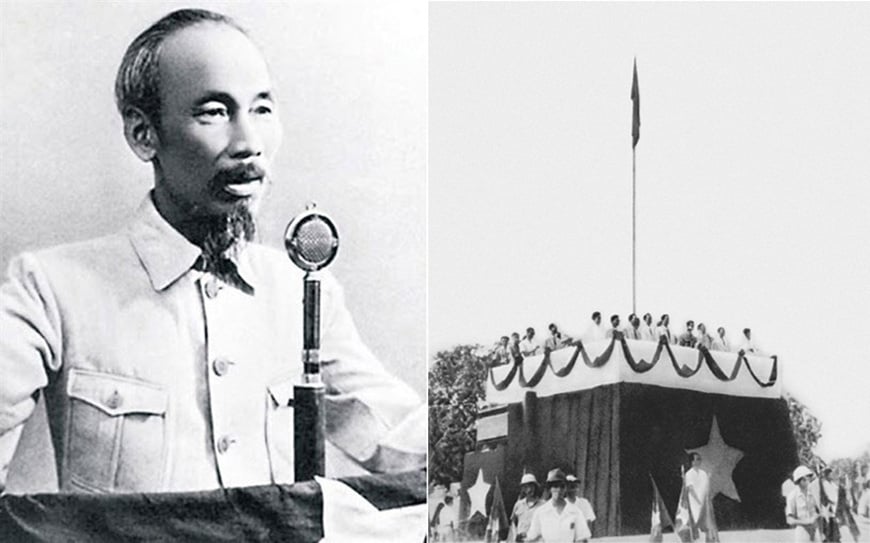
Beyond being the location where Uncle Ho (President Ho Chi Minh) read the Declaration of Independence and lived and worked, Ba Dinh Square is now the venue for many important events in the country, including crucial meetings of the National Assembly, the Central Party, and the Government. This includes rallies, parades, and processions on significant holidays. Particularly, every day of the week, there are solemn flag-raising ceremonies (at 6:00 AM in summer and 6:30 AM in winter) and flag-lowering ceremonies (at 9:00 PM) held at Ba Dinh Square. If you visit Hanoi during these hours, you will have the opportunity to witness these ceremonies.
What to experience at Ba Dinh Square in Hanoi?
Today, Ba Dinh Square in Hanoi has become a famous attraction in the city. As time adds a touch of mystery, this structure becomes more enchanting, drawing in tourists. One of the most wonderful experiences when visiting here is to wake up early and witness the flag-raising ceremony, where the red and yellow-starred flag flutters in the breeze, creating a stirring and captivating atmosphere.
Apart from admiring the 29-meter-high flagpole at the center, another highlight that visitors often enjoy is the sight of 210 lush green squares, representing the four seasons, resembling woven mats spread out on the ground. According to the Hanoi travel experience, if you’re fortunate, you might also witness the parade of the guards in front of the mausoleum. Dressed in white uniforms, white hats, and white gloves, they exude a dignified and solemn presence.
What to visit at Ba Dinh Square in Hanoi?
In addition to the question “Where is Ba Dinh Square” to plan a suitable itinerary, many tourists are also interested in visiting historical and culturally significant sites in nearby locations.
Witnessing the Flag-Raising/Lowering Ceremony – Top 1 experience at Ba Dinh Square
For tourists checking in Hanoi, the flag-raising ceremony at Ba Dinh Square is a must-see as it is a nationally significant ritual. Here, you will experience a solemn and emotional atmosphere.
At the beginning of the ceremony, the Victory Flag will parade through Ba Dinh Square, followed by a guard of honor consisting of 34 soldiers symbolizing the first 34 soldiers of the Vietnamese Liberation Army.
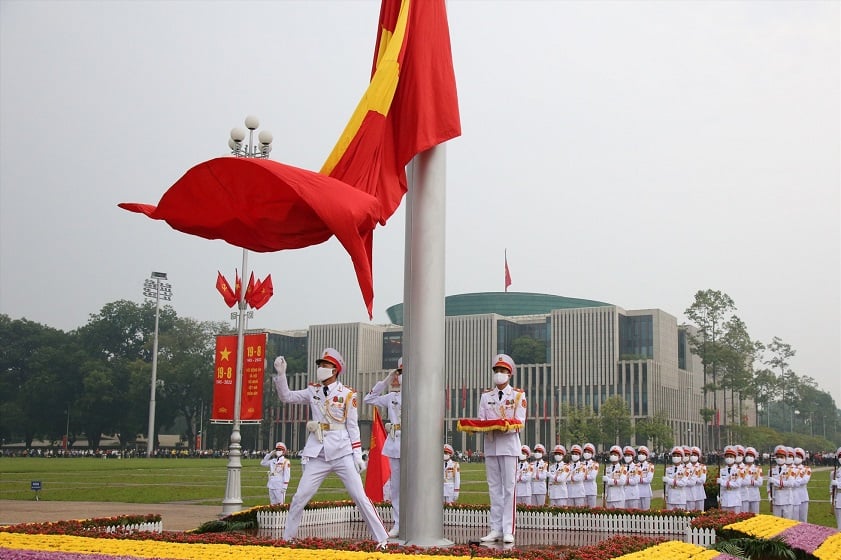
Three soldiers from the Honor Guard step forward towards the flagpole to prepare for the flag-raising ceremony, and at the same time, the doors of Ho Chi Minh Mausoleum begin to open. Upon command, the flag is hoisted to the top of the 29-meter flagpole in front of Ho Chi Minh Mausoleum. After the flag-raising ceremony, the guard of honor marches around the Mausoleum, concluding the ceremony.
Additionally, the flag-lowering ceremony at Ba Dinh Square is also attended by many locals and tourists. The ceremonies follow a similar format to the flag-raising ceremony at Ba Dinh Square and officially commence at 9:00 PM. During this time, attendees follow commands and maintain a serious posture.
Visit nearby attractions around Ba Dinh Square
After exploring and learning about Ba Dinh Square, tourists can visit nearby historical sites, which are just a short walk away.
- Ho Chi Minh Mausoleum: The Ho Chi Minh Mausoleum houses the remains of Uncle Ho and is one of the historical landmarks imbued with the soul of the capital. The mausoleum’s architecture is simple yet distinctly Vietnamese, featuring natural materials like marble, fragrant wood, and gold leaves.
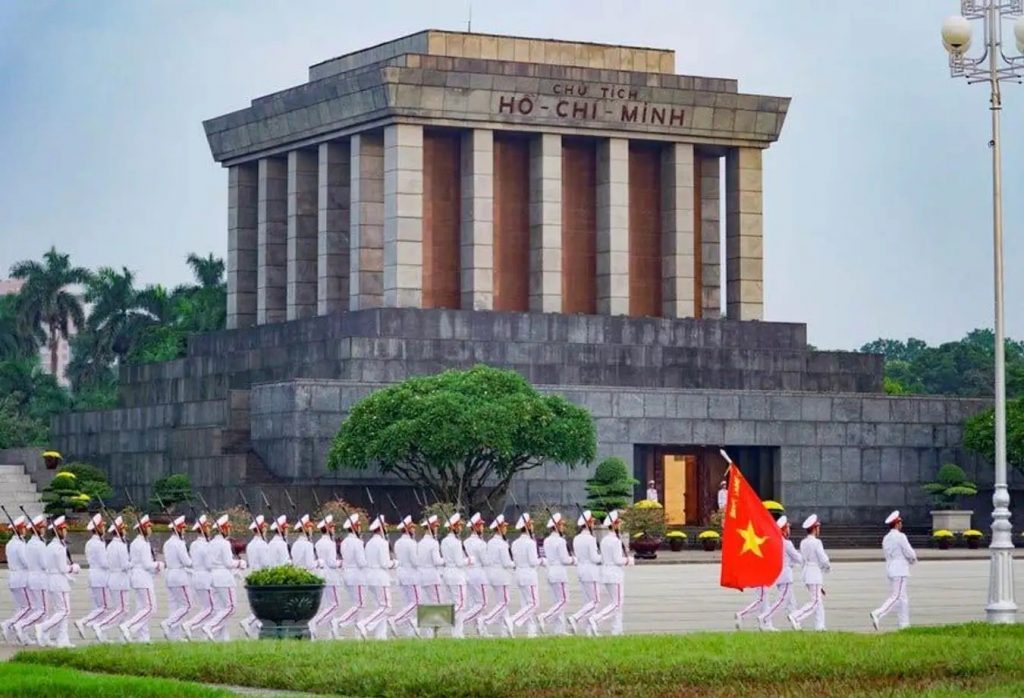
- Ho Chi Minh Museum: This museum holds many valuable artifacts related to the history and culture of the Vietnamese people, including numerous items associated with President Ho Chi Minh.
- One Pillar Pagoda: The One Pillar Pagoda is a famous temple in Hanoi, known for its unique architecture with a single pillar rising from the water in the middle of a pond.
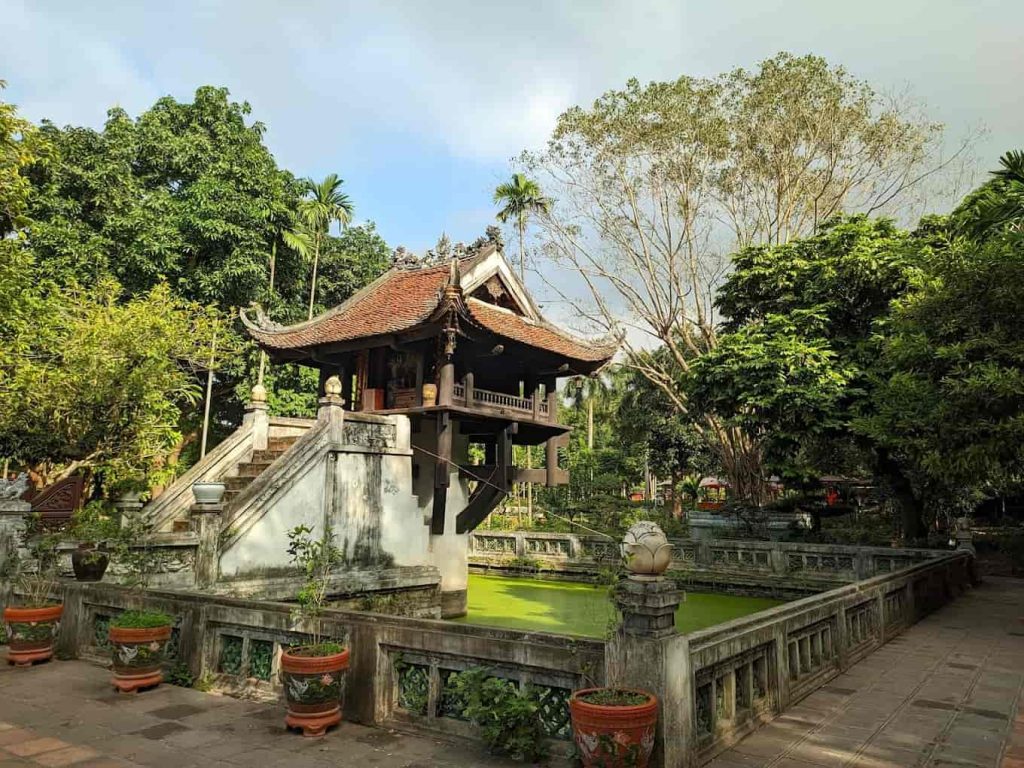
- Uncle Ho’s Stilt House and Fish Pond: Uncle Ho’s Stilt House and Fish Pond is a historical site within the Presidential Palace compound, where Uncle Ho lived and worked. Visitors can admire the traditional architecture of the Vietnamese people and immerse themselves in a peaceful atmosphere.
- Presidential Palace: This location served as the residence and workplace for President Ho Chi Minh during his leadership. The rooms here are preserved almost in their original state, allowing visitors to gain insights into the life and revolutionary activities of the venerable President.
- Hanoi Botanical Gardens: The Botanical Gardens are a large and lush park within the Presidential Palace area. This is an ideal place for those seeking relaxation, leisurely strolls, or an opportunity to learn about Vietnam’s nature and flora.
- West Lake: West Lake is one of the city’s popular recreational spots. Here, visitors can enjoy various activities such as boat rides, fishing, and savoring local specialties at lakeside restaurants.
Ba Dinh Square and Ho Chi Minh Mausoleum Sightseeing Experience
Getting to Ba Dinh Square
Ba Dinh Square is located on Hung Vuong Street, with a spacious layout and relatively light traffic, making it easy for tourists to get there.
Many people opt to rent a motorbike in Hanoi to enjoy the scenery along the way and breathe in the fresh, airy atmosphere of Hanoi. If traveling to Ba Dinh Square by this means, it is advisable to take either Ông Ích Khiêm Street or Ngọc Hà Street.
Additionally, many tourists choose the bus for its affordability and quick travel time. To reach Ba Dinh Square, you can take buses such as 16, 3, 29, 50, 34, etc. Alternatively, if you wish to travel to multiple locations in Hanoi, you can book the private car rental service with a driver in Hanoi from DanangPrivateCar.com’s. Our private car rental service ensures a safe and comfortable journey for you.
The site is open from 6:00 AM to 10:00 PM daily. Particularly, on national holidays, Uncle Ho’s birthday, or other significant events, the site remains open all day to welcome visitors attending commemorative activities.
Ba Dinh Square does not require an entrance fee for sightseeing. However, if you visit nearby historical preservation areas and sites such as the Presidential Palace, Ho Chi Minh Mausoleum, Ho Chi Minh Museum, you may need to purchase tickets ranging from 30,000 VND to 75,000 VND. Some special groups are exempt from fees, including students, seniors, revolutionary contributors, people with disabilities, and military personnel currently in service.
Notes when Visiting Ba Dinh Square
- When visiting, tourists are not allowed to take photos or shoot videos at restricted locations to maintain the solemnity of the historical site.
- It is recommended to choose attire that is modest and not too revealing when exploring Ba Dinh Square and the nearby historical sites.
- Tourists are not permitted to step on the grass or engage in actions that may damage the monuments and landscapes at Ba Dinh Square.
- If you plan to visit Uncle Ho’s Mausoleum, it is advisable to go in the morning as the mausoleum is closed to visitors in the afternoon.
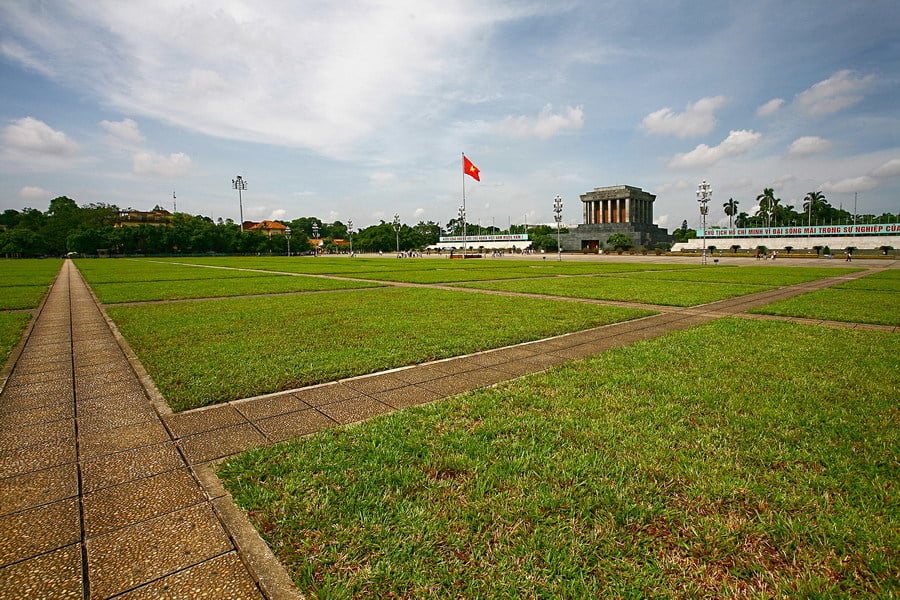
Ba Dinh Square is a famous tourist destination in the capital city, witnessing numerous important and meaningful historical events. When visiting here, tourists should combine exploring nearby historical sites to discover additional historical and cultural stories. Hopefully, the introductions to Ba Dinh Square above have provided you with valuable experiences for your visit to this location.

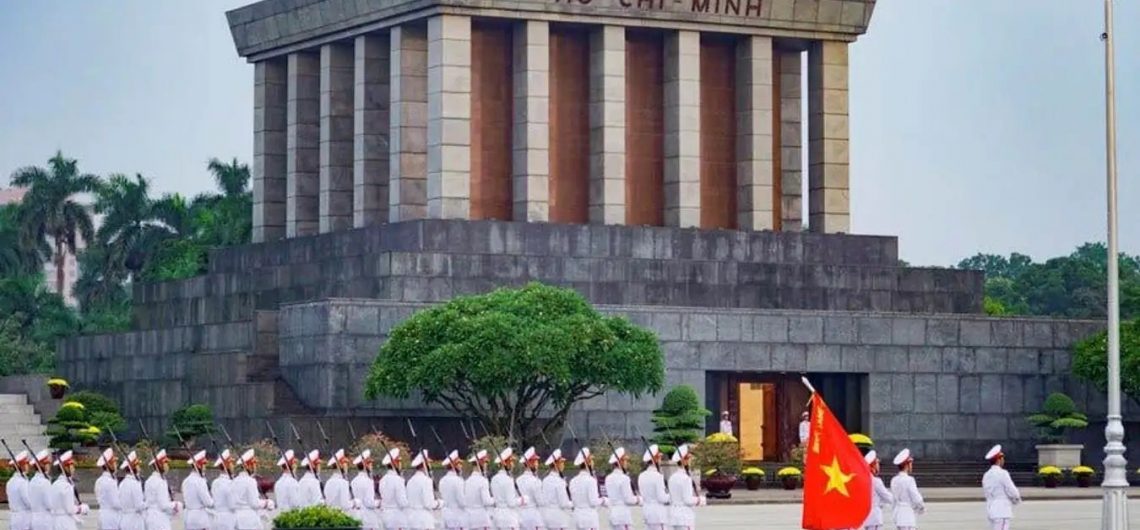
Comments